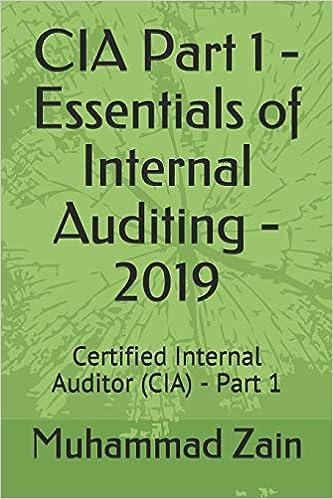| | | | A | B | C | | 1 | Chapter 4: Applying Excel | | | | 2 | | | | | 3 | Data | | | | 4 | Beginning work in process inventory: | | | | 5 | Units in process | 200 | | | 6 | Completion with respect to materials | 10 | % | | 7 | Completion with respect to conversion | 45 | % | | 8 | Costs in the beginning work in process inventory: | | | | 9 | Materials cost | $404 | | | 10 | Conversion cost | $6,210 | | | 11 | Units started into production during the period | 15,000 | | | 12 | Costs added to production during the period: | | | | 13 | Materials cost | $245,921 | | | 14 | Conversion cost | $996,935 | | | 15 | Ending work in process inventory: | | | | 16 | Units in process | 500 | | | 17 | Completion with respect to materials | 10 | % | | 18 | Completion with respect to conversion | 50 | % | | 19 | | | | | If your formulas are correct, you should get the correct answers to the following questions. | | (a) | What is the equivalent units of production for materials? | | (b) | What is the equivalent units of production for conversion? | | (c) | What is the cost per equivalent unit for materials? (Round your answer to 2 decimal places.) | | (d) | What is the cost per equivalent unit for conversion? (Round your answer to 2 decimal places.) | | (e) | What is the cost of the units transferred out? (Use rounded cost per equivalent unit.) | | Requirement 3: | | Either print a copy of your worksheet or make a copy of the worksheet in your workbook before proceeding. You will need to refer back to this worksheet. | | | | Change the percentage completion with respect to conversion for the beginning inventory from 45% to 80%, but keep everything the same as in Requirement 2. The data area of your worksheet should now look like this: | | | A | B | C | | 1 | Chapter 4: Applying Excel | | | | 2 | | | | | 3 | Data | | | | 4 | Beginning work in process inventory: | | | | 5 | Units in process | 200 | | | 6 | Completion with respect to materials | 10 | % | | 7 | Completion with respect to conversion | 80 | % | | 8 | Costs in the beginning work in process inventory: | | | | 9 | Materials cost | $404 | | | 10 | Conversion cost | $6,210 | | | 11 | Units started into production during the period | 15,000 | | | 12 | Costs added to production during the period: | | | | 13 | Materials cost | $245,921 | | | 14 | Conversion cost | $996,935 | | | 15 | Ending work in process inventory: | | | | 16 | Units in process | 500 | | | 17 | Completion with respect to materials | 10 | % | | 18 | Completion with respect to conversion | 50 | % | | 19 | | | | | | | If your formulas are correct, you should get the correct answers to the following questions. | | (a) | What is the equivalent units of production for materials? | | (b) | What is the equivalent units of production for conversion? | | (c) | What is the cost per equivalent unit for materials? (Round your answer to 2 decimal places.) | | (d) | What is the cost per equivalent unit for conversion? (Round your answer to 2 decimal places.) | | (e) | What is the cost of the units transferred out? (Use rounded cost per equivalent unit.) | | (f) | Which of the following statements are true? (Select all that apply.) | | In the weighted-average method, the percentage completion of beginning inventory has no effect on the equivalent units of production. | | In the weighted-average method, the percentage completion of beginning inventory has no effect on the cost per equivalent unit. | | In the weighted-average method, the percentage completion of beginning inventory has no effect on the cost of the units transferred out. | |






